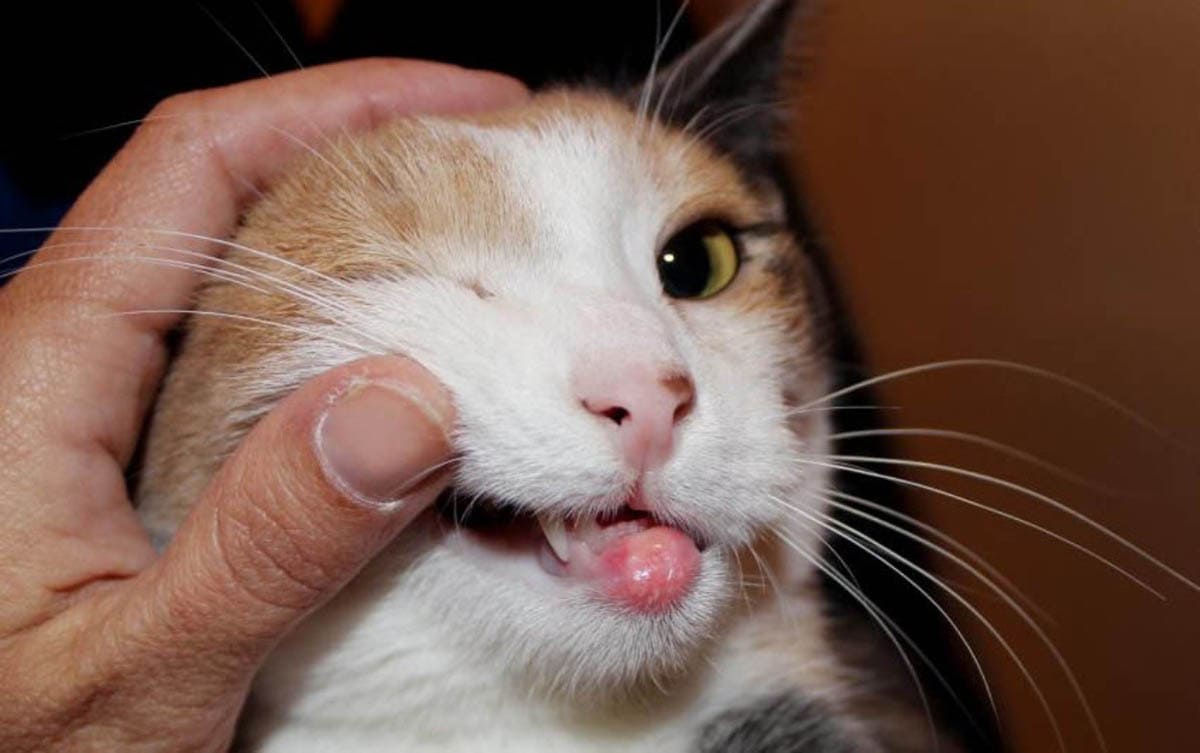What is a rodent ulcer?
Also known as indolent ulcer, rodent ulcers are ulcerations and swelling of the lip which develops in response to an underlying allergy. Rodent ulcer is a type of eosinophilic granuloma complex, which comes in three forms.
- Eosinophilic plaque
- Linear granuloma
- Rodent ulcer
This article will focus on rodent ulcers only.
White cells known as eosinophils have many roles, one of which is to help fight infections (virally infected cells, bacteria, fungi, parasites) by going to the site and releasing cytotoxic granules (this is known as degranulation), destroying the target. Rodent ulcers occur when eosinophils release their granules into local tissues, causing lesions. The exact cause of this isn’t entirely known, but it is believed that common allergens such as flea bites, food, and inhaled allergies trigger this.
Other suggested causes include dental infection and exposure to the feline leukemia virus, although not all cats who have rodent ulcers will have had exposure to the virus.
Cats of any age can develop rodent ulcers, they may appear once only or can recur. Despite the name, they have no connection to rodents.
Symptoms
Well defined, reddish-brown, thickened, glistening areas. They usually occur unilaterally on the upper lip but can occur on other parts of the lip or oral cavity. Eventually, they may ulcerate and bleed.
The lesion usually isn’t painful or pruritic (itchy) to the cat.
Diagnosis
Your veterinarian will perform a physical examination of your cat and obtain a medical history from you. A tentative diagnosis can be made upon visual inspection of the lesions, however, your vet may want to rule out other conditions with similar characteristics. Tests may include:
- Fine needle aspirates and examination of the lesion.
- Fungal cultures to check for ringworm.
- Bacterial cultures to rule out bacterial infection.
- Food elimination trials and skin prick tests to check for allergies, which can help with the treatment of this condition.
- Your veterinarian may also recommend a FeLV test to rule out infection.
Treatment
Finding and treating the underlying cause, if one is fine. This may include diligent flea control on both your cat and treating the environment (where 90% of the flea population resides), switching your cat to a novel or hypoallergenic diet and removal of the causative agent (for inhalant allergy), where possible.
- Corticosteroids are the most common treatment for rodent ulcers. Either via injection or oral tablets.
- Antibiotics to treat secondary bacterial infection.
- If lesions fail to respond to treatment, surgical removal or cryosurgery may be necessary.
- Some lesions can undergo cancerous changes and may require radiation therapy.

